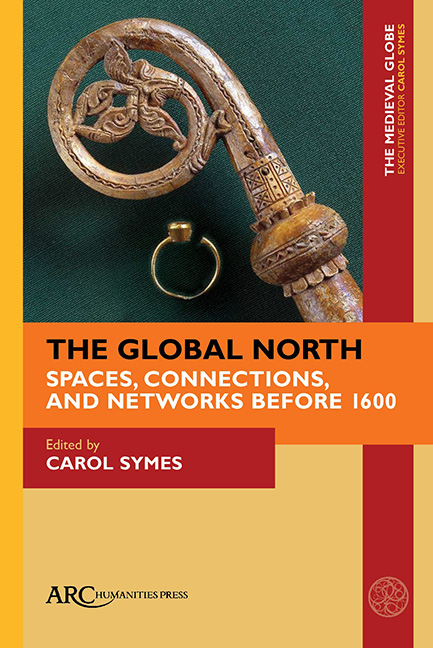Book contents
- Frontmatter
- Contents
- List Of Illustrations
- Introduction: Exploring the Global North, from the Iron Age to the Age of Sail
- Contesting Marginality: The Boreal Forest of Middle Scandinavia and the Worlds Outside
- Archaeological Evidence for Staraya Lagoda as an Early Scandinavian Emporium of the Global North
- Gunhild’s Cross and the North Atlantic Trade Sphere
- The Far North in the Eyes of Adam of Bremen and the Anonymous Author of the Historia Norwegie
- The Multi-Layered Spatiality of the Global North: Spatial References and Spatial Constructions in Medieval East Norse Literature
- Military Migration in the Baltic Sea Region, ca. 1400–1620
- Old and New Land in the North and West: The North Atlantic on the Medieval Globe around 1500
- Index
Contesting Marginality: The Boreal Forest of Middle Scandinavia and the Worlds Outside
Published online by Cambridge University Press: 20 January 2022
- Frontmatter
- Contents
- List Of Illustrations
- Introduction: Exploring the Global North, from the Iron Age to the Age of Sail
- Contesting Marginality: The Boreal Forest of Middle Scandinavia and the Worlds Outside
- Archaeological Evidence for Staraya Lagoda as an Early Scandinavian Emporium of the Global North
- Gunhild’s Cross and the North Atlantic Trade Sphere
- The Far North in the Eyes of Adam of Bremen and the Anonymous Author of the Historia Norwegie
- The Multi-Layered Spatiality of the Global North: Spatial References and Spatial Constructions in Medieval East Norse Literature
- Military Migration in the Baltic Sea Region, ca. 1400–1620
- Old and New Land in the North and West: The North Atlantic on the Medieval Globe around 1500
- Index
Summary
MORE THAN HALF of Scandinavia's land area consists of boreal forest. This environment is characterized by a hilly and undulating topography interspersed by numerous lakes, rivers, streams, and mires. From the perspective of today´s urban-centred world, or if compared to the major waterways and coastal ports where connectivity and global encounters are clearly apparent, the Scandinavian inlands appear marginal. This mistaken notion, we argue, is one of the main reasons for a general scarcity of research on the history of inland Scandinavia, a fate shared by other so-called marginal landscapes in Europe. Although archaeological research has repeatedly demonstrated connections between the exploitation of frontier “outlands,” on the one hand, and agricultural plains and coastal areas on the other, the boreal forests have hitherto been considered of negligible importance for understanding the larger societal developments of the past. Not only do they lack the presence of social elites in the archaeological record and produce little written documentation prior to 1500 CE, the first permanent agrarian settlements have generally been perceived as belonging to the Viking Age (ca. 750–1050 CE) or the central and later Middle Ages (ca. 1050–1520 CE), and their presence has been explained as a result of population growth in the central agricultural regions and the new technologies that facilitated farming in forested areas. In consequence, their history has largely been written on the basis of an anachronistic archaeology looking ahead to the historical and ethnographic situation of the early modern and modern eras.
This view, however, is now being challenged by a growing body of archaeological data supplemented by an increasing number of studies based on modern methods. For example, recent studies have shown an intensified hunt for terrestrial mammals starting around the fourth century CE, followed by a subsequent exploitation of marine mammals in the following centuries. These developments are contemporary with indications of inland agricultural expansion during the late Roman Iron Age, extending along the main river valleys that connected the region with the Gulf of Bothnia in the east and the Atlantic in the west. At several places in the boreal forest, palynological studies suggest that agricultural settlements with permanent “field-and-meadow systems” were established during the early or middle part of the Iron Age, emerging along with the development of iron production.
- Type
- Chapter
- Information
- The Global NorthSpaces, Connections, and Networks before 1600, pp. 9 - 36Publisher: Amsterdam University PressPrint publication year: 2021



